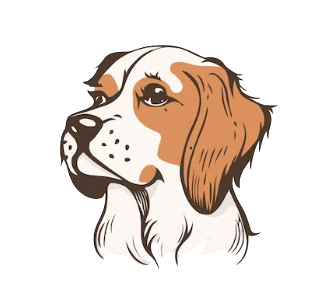Summery:
- Character and temperament of the Irish Setter
- .Irish Setter Health: What Are the Common Ailments?
- .Diet: What Does the Irish Setter Need?
The Irish Setter or Setter Retriever is a breed of hunting dog, also used as a companion dog.
In this article we will talk about his physical characteristics, character and temperament – to understand what he needs to be happy – the psycho-physical disorders that most commonly affect him, the correct diet and life expectancy.
1- Description: What does the Irish Setter look like?
The Irish Setter is characterized by:
- moderately long, silky coat of red or brown color , requiring frequent brushing to keep it clean and free of knots. The undercoat is more abundant in winter. The topcoat , the most superficial, is ” feathered ” in some places such as the tail, ears, chest, back of the legs;
- The average heightis between 61 and 71 cm*;
- The weightof males is between 29 and 34 kg, while that of females is between 25 and 29 kg;
- The chestis deep and the waist is narrow .
*The FCI Breed Standard for the Irish Setter states that males are 58 to 67 cm tall and females 55 to 62 cm.
Note : The term “Irish Setter” is commonly used to refer to the breed of dog that meets the criteria of the American Kennel Club , while the name “Red Setter” is recognized by the Field Dog Stud Book .
[blockquote align=”none” author=””]”The Irish Setter’s heart is as warm as its fiery red coat; it’s a loyal companion full of boundless energy and love.”[/blockquote]
2- Character and temperament of the Irish Setter
Compatibility with Children and Other Animals
- Irish Setters get along very well with children and other dogs and tend to welcome visitors with enthusiasm.
- However, while they do get along quite well with pets, this breed has an innate hunting instinct, which can cause problems when living with small pets such as rabbits, birds, guinea pigs, cats, and ferrets (but not only).
- Some specimens do not tolerate cats, even if they have received a good education at a young age, and may be too boisterous with small children.
Temperament and Companionship
- That said, as the FCI, ANKC, and UK standards state, the breed should be “demonstrably affectionate”. As a result, they are generally considered to make excellent companion animals and pets.
Exercise and Activity Requirements
- The Irish Setter is an active breed and requires long daily walks and off-leash runs in wide open spaces.
- However, this is a dog with a tendency to “not hear” the owner’s call; therefore, careful off-leash training is necessary before attempting this.
Behavioral Traits
- Irish Setters are working dogs and have a constant desire to “do something.”
- Inactivity can easily lead to boredom in this breed, which can lead to hyperactive and destructive behavior.
- This is not a breed that can be left alone for long periods of time, either indoors or out in the yard.
- Irish Setters thrive on the constant companionship of their human caregivers.
Trainability and Intelligence
- Irish Setters respond quickly to training and are highly intelligent.
Suitability as Guard Dogs
- Although they are usually alert to their surroundings, they are not suitable as guard dogs, as they are not a naturally assertive breed.
Use as Therapy Dogs
-
- Irish Setters are also widely used as therapy dogs in schools and hospitals, with special permission.
- In schools, they help create a calm and relaxed environment – a child can read to the dog without fear of being corrected or judged.
3- What Are the Common Ailments?
Life Expectancy
- The life expectancy of an Irish Setter tends to be around 11 to 12 years.
Health and Common Problems
Irish Setters tend to be a relatively healthy breed.
Common problems include:
-
-
- Cancer
- Progressive retinal atrophy (PRA)
- Epilepsy
- Entropion
- Hypothyroidism
- Hyperosteodystrophy
- Gastric dilatation volvulus (bloat)
- Osteosarcoma
- Von Willebrand disease
- Patent ductus arteriosus
- Canine leukocyte adhesion deficiency (CLAD)
- Celiac disease
- Hip dysplasia
-
Genetic Testing
- The Irish Setter is one of the few breeds for which genetic tests have been developed to detect the presence of both CLAD and PRA (RCD-1).
4- Gluten Intolerance or Celiac Disease
Irish Setters and Gluten Intolerance or Celiac Disease:
-
- At approximately 6 months of age, when fed a gluten-containing diet, Irish Setters with this condition will develop an increased presence of immune cells and decreased absorption in the small intestine.
- These effects lead to further damage to the small intestine, as well as malnutrition and diarrhea.
- Irish Setters fed a gluten-free diet have been shown to be free of any effects associated with gluten intolerance.
- Gluten intolerance in Irish Setters is a naturally occurring genetic disorder, the result of a single autosomal recessive locus.
References
- Hall, E.J.; R. M. Batt (February 1992). “Dietary modulation of gluten sensitivity in a naturally occurring enteropathy of Irish setter dogs”. Gut. 33(2): 198–205. doi:10.1136/gut.33.2.198. PMC 1373930. PMID 1347279.
- Garden, Oliver A; et al. (2000). “Inheritance of gluten-sensitive enteropathy in Irish Setters”. American Journal of Veterinary Research. 61(4):462–468. doi:10.2460/ajvr.2000.61.462. PMID 10772115.
- Hall, E.J.; Batt, R. M. (1990). “Development of wheat-sensitive enteropathy in Irish Setters: morphological changes”. American Journal of Veterinary Research. 51(7):978–982. PMID 2389896.
5- Diet: What Does the Irish Setter Need?
Irish Setter Diet and Health Needs
- Balanced Diet Requirements
The Irish Setter is a breed that requires a very balanced diet to remain healthy and lively.
It requires higher levels of protein, vitamins, minerals, and essential fatty acids than other breeds. - Diet for a Shiny Coat and Strong Immune System
His coat will remain shiny, and his immune system strong.
The ideal diet for this breed should contain high-quality dry kibble, containing only ingredients rich in carbohydrates, but also wet food consisting of lean meats and cooked vegetables. - Preventing Obesity and Digestive Problems
In this way, it is also possible to reduce the risk of obesity and the most common digestive problems. - Celiac Disease Risk
The Irish Setter is potentially affected by celiac disease, with related serious health problems if left untreated. - Avoiding Human Food
Also for this reason, but also because it is unsuitable for growth and a potential cause of serious health complications, it is better never to give him human food. - Healthy Reward Foods
The reward food can instead be made up of carrots or specific foods.
Dog Breeding: Art and Science
- Introduction to Dog Breeding
Dog breeding is both an art and a science, requiring deep knowledge, dedication, and a genuine love for dogs. - Guide for Responsible Breeders
In this section, we provide a thorough guide for responsible breeders, covering everything from selecting the right breeding pairs to understanding genetic traits and managing pregnancy. - Ethical Considerations in Breeding
You’ll learn about the ethical considerations involved in breeding, how to care for pregnant dogs and newborn puppies, and the importance of socialization and early training. - Resources for All Breeders
Whether you’re a first-time breeder or an experienced professional, our resources will help you raise healthy, well-adjusted puppies.





